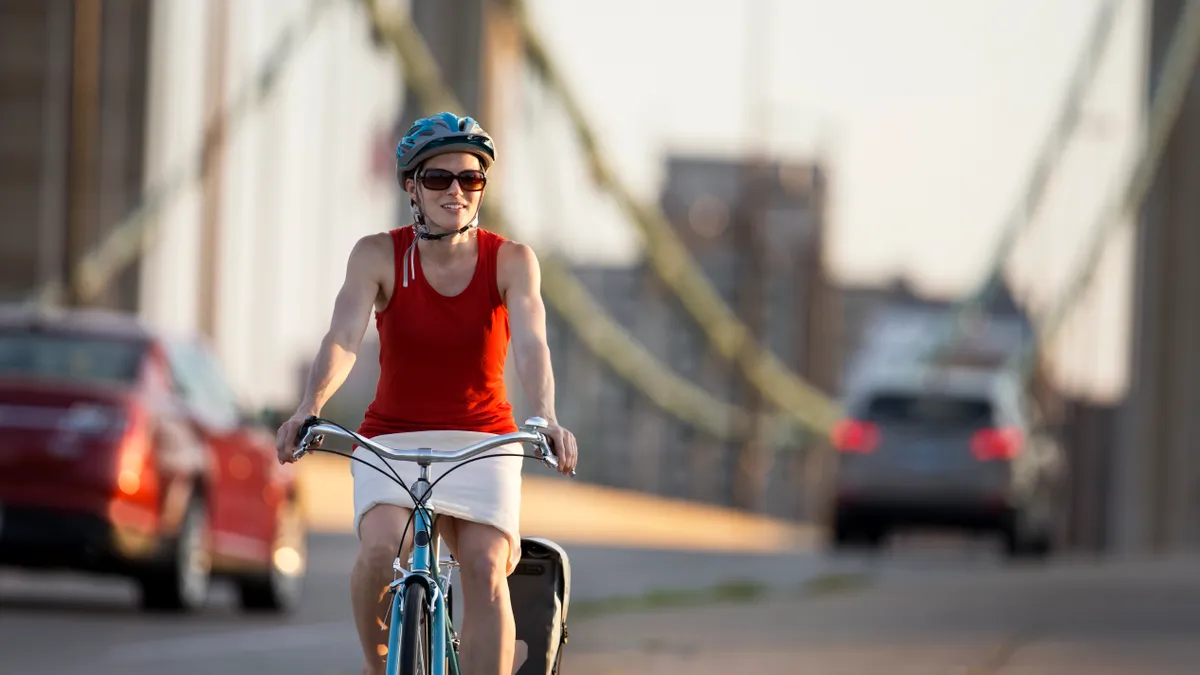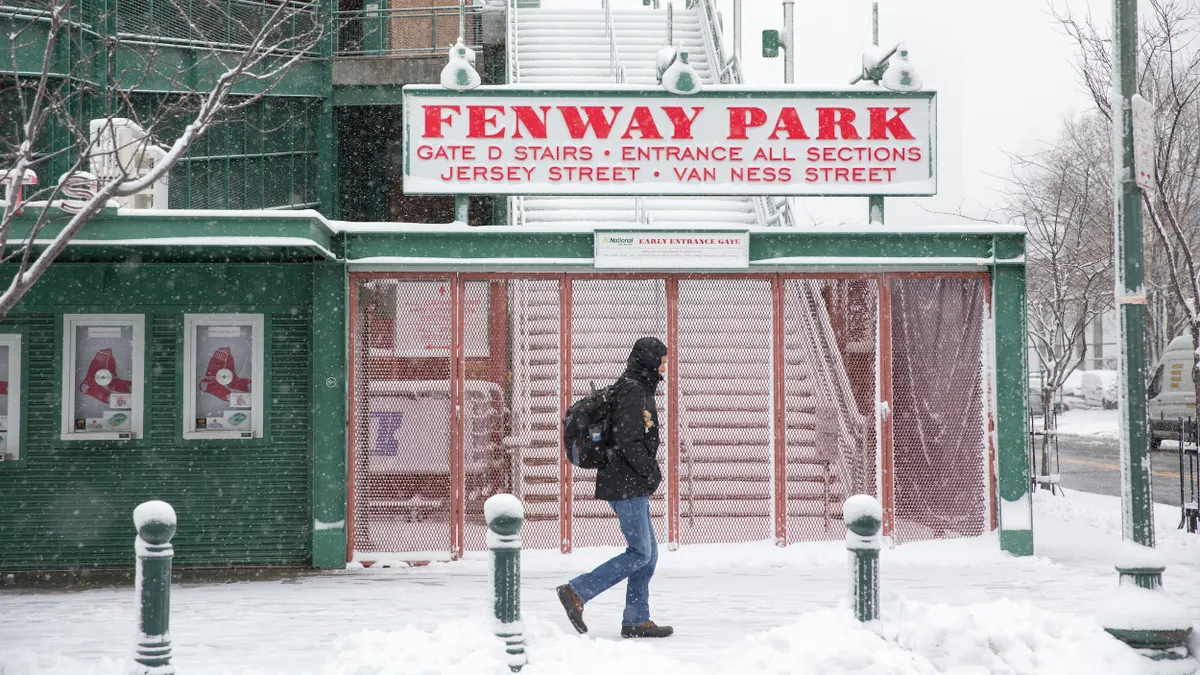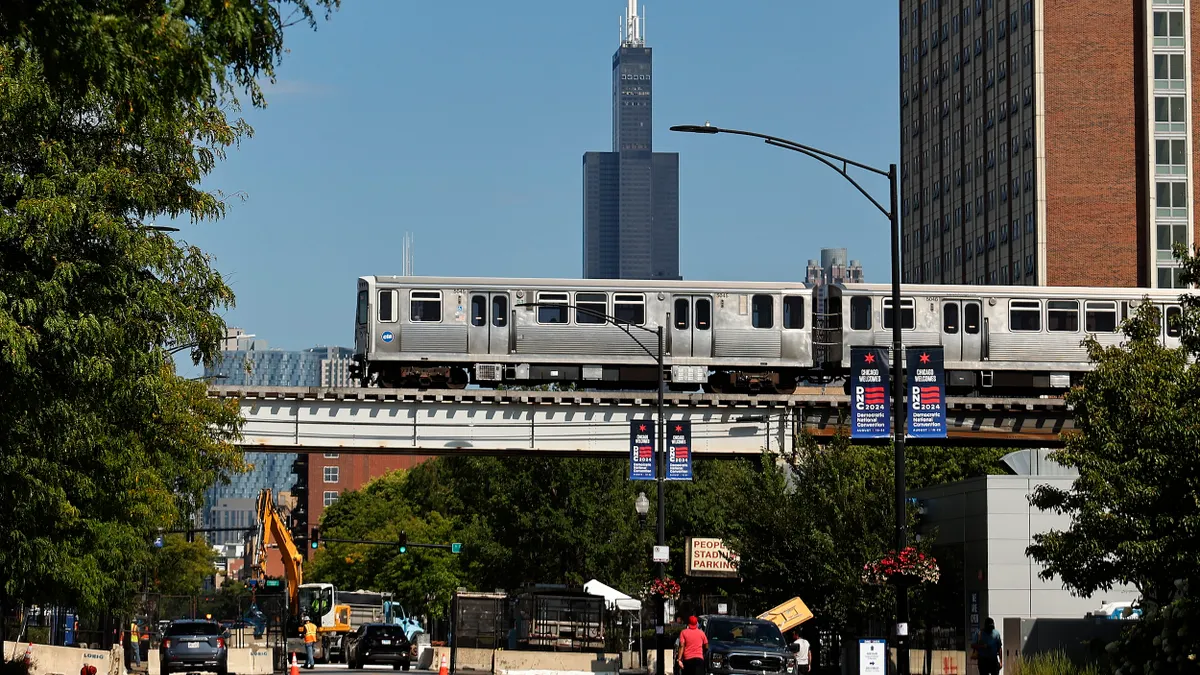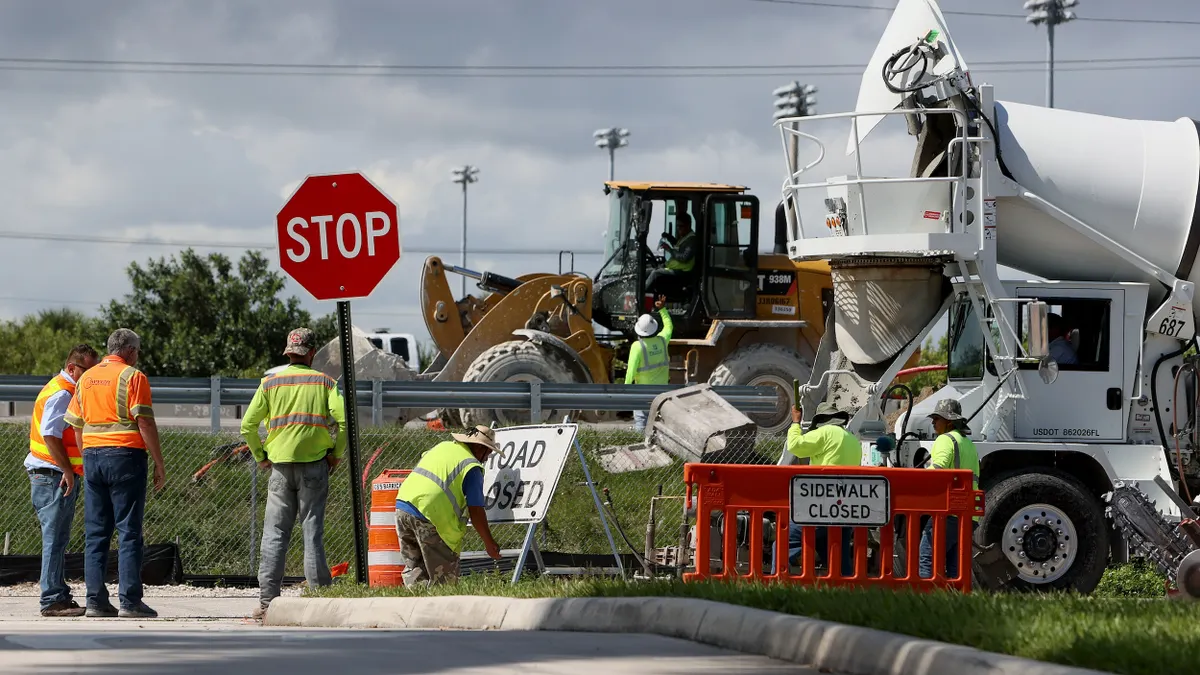What makes a city bike-friendly? Ken McLeod, policy director with the League of American Bicyclists, points to the “Five E’s”:
-
Engineering, or the infrastructure that supports biking, such as well-connected biking lanes;
-
Equity and accessibility, such as bike-sharing programs;
-
Education about safe biking;
-
Encouragement to get people biking, such as bike-themed events, and
-
Evaluation and planning to develop seamless bike networks.
“Ideally, in great bike-friendly cities, biking is normal,” McLeod said: People from all demographics use bikes to safely get to school or work or to run errands.
City plans for bicycling, or more broadly, plans for active transportation — that is, using human energy, primarily walking and bicycling, to get around — are becoming more common, says Rebecca Davies, city ratings program director with People for Bikes. “If cities don’t have those plans in place, then when funding becomes available, you’re not ready to take advantage of it,” she said. Smart Cities Dive looked into the bike-friendly features of the top large, medium and small cities in the group’s ratings this year.
Minneapolis, which took top honors in the large-city category, offers 244 miles of bikeways, including more than 100 miles of trails. Its Safe Routes to School Program started in 2005 with a goal of creating safe routes for students and families to walk or bike to school and parks. The program has expanded over the past decade to include projects such as bicycle boulevard improvements. The program received a $100,000 grant from the county in 2020, a $300,000 grant from the Minnesota Department of Transportation in 2021, and $1 million of federal funding from the Metropolitan Council, a regional policymaking body, in 2022.
Davis, California, the top medium-sized city for biking, has 63 miles of pathways, 102 miles of bike lanes, and about 4,300 bike racks scattered across the city. In addition, 75% of roads have a posted speed limit of 25 miles per hour, according to a city website. “People can bike to school, stores, activities and just for fun,” said Jennifer Donofrio, senior transportation planner at the city’s Department of Public Works, Engineering and Transportation.
Provincetown, Massachusetts, the best small bike-friendly city, was developed in the 18th and 19th centuries with slender building lots linked by a network of narrow streets designed for people, not cars, said Dan Riviello, assistant town manager. “Having a grocery store, post office, beaches, shops, town hall, restaurants, banks, homes and other businesses within a half-mile walking distance creates a nonmotorized, friendly, central core that encourages walking and cycling,” Riviello said.
Public bicycle racks are available at most destinations, Riviello added. Visitors to Provincetown can also choose from five bicycle shops in town that offer rentals, including e-bikes.
Making cities bike-friendly
These bike infrastructure experts offered suggestions for other communities looking to improve their bike-friendliness:
Aim for a complete bike network. Without this, bicyclists have to leave a bike path and ride on streets to get to their destinations, McLeod said. If this requires navigating higher-speed, multi-lane roads, it can ruin the journey for many cyclists, he added.
One challenge to creating a connected network is the way in which many bicycling infrastructure initiatives are handled: on a project-by-project basis, rather than as part of a comprehensive plan, Davies says. Completing multiple projects takes a long time, and political leaders can waver in their commitment to an individual project if they don’t see it as part of a larger plan. Donofrio recommended creating policies that require developers to add bike lanes, pathways, and bike parking.
Address biking as part of a “complete streets” mandate, Davies suggests. Communities taking a complete streets approach require new roads or significant modifications to existing roads to serve all transportation modes, including biking, walking, public transit or using mobility devices.
Prioritize “low-stress bike connectivity,” said Kadence Novak, pedestrian and bicycle coordinator with the Minneapolis Department of Public Works. Low-stress facilities are designed to be comfortable for all users. In addition, pair infrastructure changes with educational campaigns to show how everyone benefits from more transportation options, Novak said.
Rivello recommends slowing vehicular traffic speeds, creating more bike lanes, and adding bicycle signage and pavement markings that prioritize navigation for cyclists. “Make it easier to travel by bicycle than by car,” he said.
Provide adequate and secure bike parking. While car parking has been required in municipal development codes for decades, bike parking generally has not been, McLeod said. This can deter bicyclists, who want to know their bikes will be safe if they need to, say, step inside a grocery store.
People for Bikes’ Bike Infrastructure Project has a database of more than 1,000 projects across the U.S., with a focus on those incorporating the SPRINT principles: slow speeds, protected bike lanes, reallocated road space, intersection treatments, network connections, and trusted data. The nonprofit says its legislative guide can assist policymakers and advocates with funding bike infrastructure, mandating complete streets, advancing bike infrastructure through climate legislation and creating safer places to ride.



















